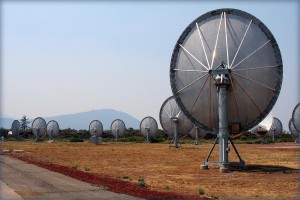
I rarely turned my computer off in college. It would hum away close to my bed, because I had donated my processing power to SETI, the once-government funded Search for Extraterrestrial Intelligence. Raised on Star Trek: The Next Generation, Ray Bradbury and Carl Sagan, it seemed so absolutely certain to me that there is life out there.
There have always been arguments that even if there was other life in the universe, we would never find it -- space is too vast, creation too haphazard; we're searching at the wrong time. Many people think even looking is, well, crazy, something to be relegated to an FBI basement with Agent Mulder.
Which is why it was not so surprising to hear of the shutdown of the Allen Telescope Array, where SETI, located in Mountain View, runs its searches for extraterrestrial life. The array has been mothballed due to money problems. In these days of neverending budget cuts, dreaming of the stars is a much harder sell.
Yet it is hard to imagine a more frustrating time for such an interruption to have occurred. Scientists have discovered 1,235 exoplanets, some of which could be hospitable to life. So now we know where to search, a mission that SETI CEO Tom Pierson estimates would cost $5 million.
And it's not just SETI that is losing out, but research projects from the Radio Astronomy Lab, at the University of California, Berkeley, which runs the Hat Creek Radio Observatory. SETI contributed the funds, and Cal operated the telescopes.